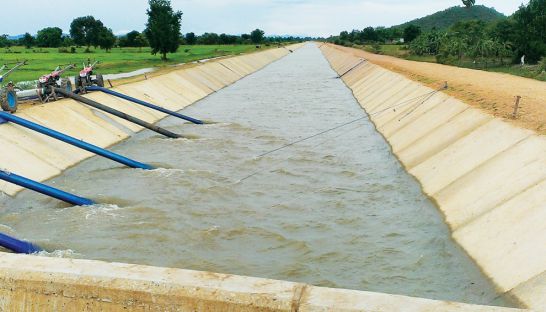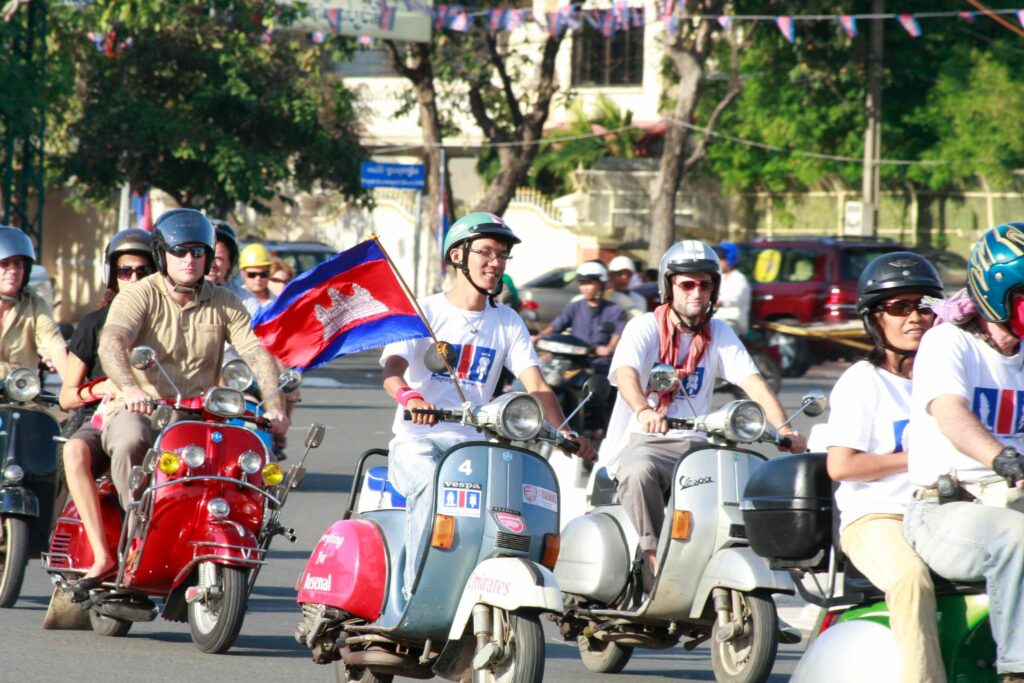Unofficial Translation from The Phnom Penh Post’s Khmer edition
TUESDAY, 1 DECEMBER 2015,
TONG SOPRACH
ស្រុកខ្មែរឡើងកម្ដៅទាំងនយោបាយ និងអាកាសធាតុ

Most Cambodians have resented the relentless political changes, which have been the cause of the merchants’ complaint and the money holders’ hesitancy to invest on real estates or deposit their money to the bank. Meanwhile, people tend to find it hard to find a job as the EU-funded NGOs will soon lose their sources of income since the Tom-and-Jerry Leaping Frog Game resulted in the European Union’s decision to warn a cease in the financial aid, worth around USD 450 million in the previous week.
Simultaneously, the people in the rural areas are so much more vulnerable to natural disasters such as drought, flood, and storm than those living in the urban areas. .These hazards are again pushed by climate change resulted from human activities. According to the statistics collected by the National Committee for Disaster Management (NCDM), in this year alone, the natural disasters have ruined 3464 houses, victimized 2,515,358 household and killed 25 people. Even worse, in the previous week, the Ministry of Water Resources and Meteorology announced that the next year’s temperature will increase by 1 degree Celsius, resulting in the maxi temperature in April and May tipping 40 degrees Celsius.
Notably, the year 2011 witnessed the highest number of deaths caused by natural disasters with 458 people dying from this cause, while year 2013 stands in the second place with 375 victims.
According to the studies conducted by the numerous UN Agencies and Centre for Research on the Epidemiology of Disasters, out of all countries, Cambodia is one of the most vulnerable to natural disasters.
Furthermore, in average, 8,400 people out of 100, 000 Cambodian people are affected. This issue was raised by who? at the Summit on Climate Change in Paris (COP21), which was conducted with an aim to prevent the world temperature from rising by 2 degree Celsius.
Cambodia has been suffering is the repercussion of the destruction of natural resources, including uncontrolled logging, over-dredging, mining, illegal fishing, and building hydropower plants. These activities contribute to climate change, by causing a shift in rainfall and drought, and increasing the heat wave. In addition, many wild animals, due to the loss of habitat and food sources in deforestation, have had to migrate to the other countries to survive, just like humans.
Ironically, the kingdom’s effort to build the hydropower plant has been proved insufficient as there was a blackout almost over the country.
Therefore, the effort to build dams has not done much good, and has destroyed the surrounding natural environment and damaged tourist industry because of the fact that the country still does not have enough supply of electricity. What if the blackout happens again during the summit? Can the kingdom guarantee the safety of the world leaders and delegations?
Due to their passion to nature, natural resources and environmental change, those who debate over and report the current environment in Cambodia, including some NGO officers and journalists, have been threatened and murdered. Their examples include environment activist Chhut Vuthy and local journalist Heng Serey Oudom. Cambodia is by the way ranked 144 out of 180 countries on reported journalist violations (RSF, 2015).
Both the consumers and suppliers are responsible for the destruction of the natural resources. Overall, China (PRC) has high demand of natural resources while Cambodia has to be the supplier as the kingdom needs to feed the army (including the bodyguards of some senior officials). This effectively and efficiently takes away the government’s ability to manage the country’s natural resources.
Supplying the demand of natural resources of China, so to speak, is no different from Khmer Rouge exporting rice to China in exchange for ammunition.
Today’s so-called “aids without compensation” and low-interest loan have become the new term of trade for Cambodia’s natural resources. Moreover, it is a friendly gesture necessary for the maintenance of the two countries’ long-term friendship. For example, during the Cambodia’s confrontation with Thailand along Cambodian-Thai border in Preah Vihear province, large amount of forests were logging illegally. It effects to the troop who difficult to hide from the enemies.
Furthermore, the Ministry of Water Resources and Meteorology has done little in terms of irrigation. Today’s canals and dams are the legacies of the ancient time and Khmer Rouge regime, which are too old to provide sustainable water supply. This is a problem that contributes significantly to the consequences of climate change.
To cut the matter short, the National level has allowed extensive logging and turned a blind eye to illegal logging while the sub-national levels (especially; districts) are responsible for the prevention of people’s safety from the natural disaster through building small hills and shelter for homeless victims and then change the nice word to climate change instead of the disaster.
Lastly, the emergent prevention of climate change and its effects is one of the main goals of the new development agenda formulated through the Sustainable Development Goals (SDG 2015).
How much longer will the Cambodian people have to suffer from climate change before combating it? As a Cambodian citizen, is surviving the only thing you need?
Tong Soprach is a social-affairs columnist for the Post’s Khmer edition.
Comments: [email protected]
